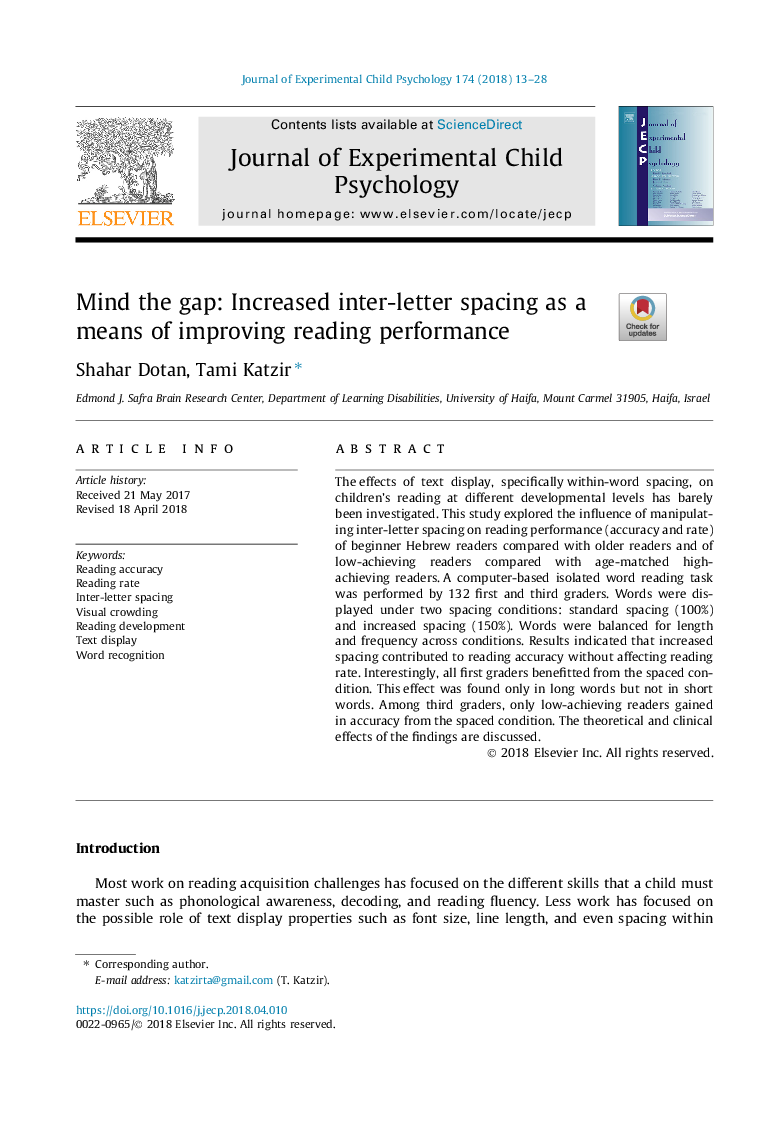| Article ID | Journal | Published Year | Pages | File Type |
|---|---|---|---|---|
| 7273688 | Journal of Experimental Child Psychology | 2018 | 16 Pages |
Abstract
The effects of text display, specifically within-word spacing, on children's reading at different developmental levels has barely been investigated. This study explored the influence of manipulating inter-letter spacing on reading performance (accuracy and rate) of beginner Hebrew readers compared with older readers and of low-achieving readers compared with age-matched high-achieving readers. A computer-based isolated word reading task was performed by 132 first and third graders. Words were displayed under two spacing conditions: standard spacing (100%) and increased spacing (150%). Words were balanced for length and frequency across conditions. Results indicated that increased spacing contributed to reading accuracy without affecting reading rate. Interestingly, all first graders benefitted from the spaced condition. This effect was found only in long words but not in short words. Among third graders, only low-achieving readers gained in accuracy from the spaced condition. The theoretical and clinical effects of the findings are discussed.
Related Topics
Social Sciences and Humanities
Psychology
Developmental and Educational Psychology
Authors
Shahar Dotan, Tami Katzir,
